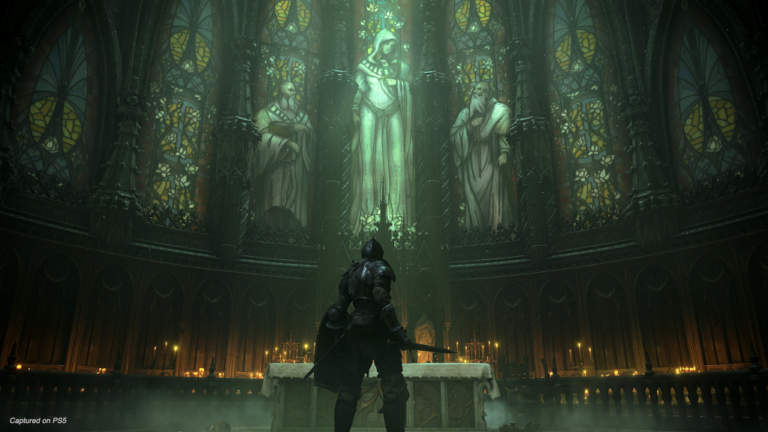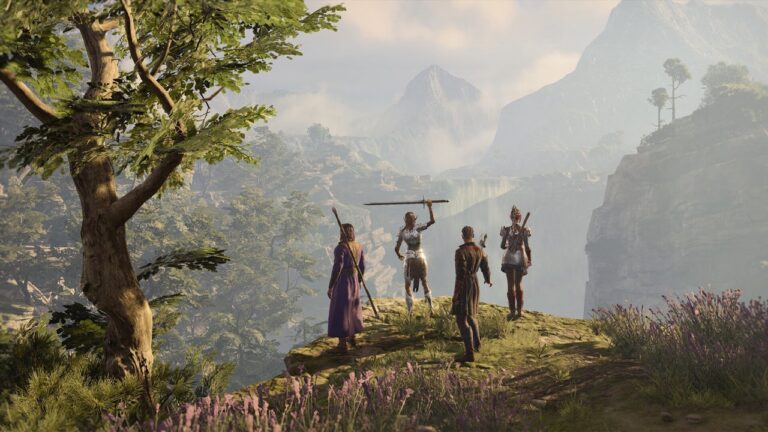Introduction to Starfield and Bethesda’s Vision
Starfield marks a significant milestone for Bethesda Game Studios, representing the long-awaited foray into the realm of space exploration and science fiction. As the first new intellectual property developed by the studio in over 25 years, Starfield showcases Bethesda’s ambition to expand its storied legacy of creating immersive, open-world role-playing games (RPGs). The game’s announcement in 2018 generated considerable excitement, capitalizing on Bethesda’s reputation for building rich worlds characterized by intricate narratives and player agency.
The evolution of Bethesda’s ambitions can be traced through its previous works, from the critically acclaimed The Elder Scrolls series to the modern classic Fallout games. Each title has further developed the studio’s unique philosophy, intertwining deep lore, expansive environments, and player-driven narratives. However, the transition from familiar fantasy settings to the vastness of space introduces both exciting opportunities and significant challenges. With Starfield, Bethesda seeks to innovate within the space genre while applying its hallmark principles of detailed world-building and character development.
The studio aims to push the boundaries of open-world gaming by enhancing exploration, allowing players to traverse diverse planets, engage with complex factions, and uncover numerous secrets lurking among the stars. Bethesda has expressed its intent to incorporate realistic physics and advanced gameplay mechanics to create a sense of authenticity and immersion that echoes the vastness of space. This ambitious project aspires to not only meet the high expectations of fans but also attract a broader audience fascinated by the possibilities that lie in the cosmos.
As we delve deeper into Starfield, it becomes clear that this space epic encapsulates Bethesda’s vision for the future of RPGs, promising a blend of nostalgia and innovation emblematic of the studio’s rich history.
Gameplay Mechanics and Exploration
Starfield introduces an expansive universe that invites players to engage in a multitude of gameplay mechanics centered around exploration and combat. Central to the experience is the mechanics of space travel, allowing players to navigate a vast array of planets and star systems. The game’s ship customization system plays a crucial role in this aspect, enabling players to build and modify their vessels to suit their exploration needs. Players can enhance their ships with various modules, improving speed, durability, and even weaponry, which adds a strategic layer to the gameplay. Efficient resource management becomes essential as players must gather materials to fuel their ships and craft necessary upgrades.
Ground-based exploration is equally immersive, featuring diverse environments across different planets. Each world presents unique challenges, from hostile terrains to varying atmospheres, requiring players to adapt their approach. The mechanics of traversing these environments are enhanced by the game’s dynamic weather systems and environmental hazards, which not only contribute to the realism but also impact gameplay. Players will encounter a variety of quests and side missions that encourage thorough exploration, rewarding curious adventurers with valuable resources and narrative depth.
Combat within Starfield is multifaceted, encompassing both stellar battles and on-foot encounters. Players can engage in space dogfights with rival ships, making use of tactical shooting mechanics and utilizing the diverse weaponry available for their ships. When grounded, the game shifts to first-person combat mechanics, where players can engage enemies with a selection of firearms and melee weapons. The mechanics of combat are designed to be fluid, encouraging players to develop their characters through skill progression systems. However, there are moments where combat may feel unbalanced or repetitive, posing challenges in maintaining engagement. Overall, the combination of exploration, ship customization, and combat systems creates a compelling gameplay experience that embodies Bethesda’s ambitious vision for Starfield.
Narrative and World-Building in Starfield
Starfield presents a rich narrative experience, intertwining storytelling with expansive world-building that captures the essence of Bethesda’s creative ambitions. The main narrative arc revolves around the players’ exploration of the cosmos amidst various factions vying for power and influence. Players embark on a journey that allows them to shape their own destinies through choices that resonate throughout the game. This nonlinear storytelling approach grants players the freedom to engage with the universe in a multitude of ways, resulting in a more personalized experience.
Central to the narrative are key characters that players meet along their adventure. These characters are intricately developed, each possessing unique backgrounds, motivations, and affiliations with different factions. From mercenary groups to scientific coalitions, the factions represent a tapestry of ideologies and conflicts that enrich the overarching narrative. Bethesda’s commitment to character depth is evident in the dialogue, which is crafted to be engaging and dynamic, often allowing players to make significant decisions that impact relationships and story progression.
The game’s lore serves as a foundation for its world-building, providing players with historical context and insights into the cultures, technologies, and struggles faced by various civilizations. This depth transforms Starfield into a living, breathing universe where players can immerse themselves in the intricate histories that define the planets and their inhabitants. The incorporation of technological advancements, from space travel to weaponry, not only adds to realism but also enhances gameplay by creating opportunities for exploration and discovery.
Overall, the narrative and world-building elements in Starfield work in harmony to create an enthralling experience. By integrating rich dialogue, compelling character arcs, and an expansive lore, Bethesda invites players to delve into a universe that is both vast and intimately connected to their choices. The meticulous attention to detail fosters a sense of belonging, allowing players to feel as if they are part of a much larger story unfolding across the stars.
Final Thoughts and Future Implications for Bethesda
Starfield has undoubtedly marked a significant chapter in Bethesda’s storied history, showcasing their ambition to venture into the realm of space exploration through a role-playing game (RPG) framework. Upon examining the game holistically, it becomes evident that while Starfield triumphs in its expansive world-building and immersive narrative, it also presents certain shortcomings that require thoughtful consideration. One of the most notable successes is the vastness of the game’s universe, which offers players an engaging environment teeming with lore and exploration opportunities. From contrasting planets to intricate factions, the game crafts a tapestry that fans and newcomers can appreciate. However, some players may have found the gameplay mechanics occasionally repetitive, raising questions about the balance between exploration and action.
The narrative depth introduced in Starfield serves as a noteworthy component, delving into themes of discovery, ambition, and the unknown. However, the reception has revealed a divergence in player experiences, with some players craving a deeper emotional connection while others appreciated the thematic complexity offered. This dichotomy may influence Bethesda’s approach in future projects, particularly their emphasis on creating immersive and emotionally resonant narratives that cater to a diverse audience.
As we consider the future implications of Starfield on Bethesda’s trajectory, it raises intriguing questions about the evolution of RPGs and the space genre as a whole. The feedback from this title could very well shape the way Bethesda tackles its upcoming projects, with a potential shift towards refining gameplay mechanics and enhancing narrative engagement. Furthermore, fans may speculate on the possibility of expansions or sequels that could not only build on the existing universe but also address the challenges encountered in Starfield. Ultimately, this game serves as both a triumph and a learning opportunity, marking a pivotal point for Bethesda and its future endeavors.


